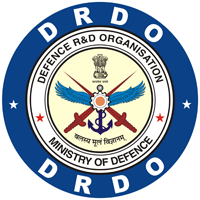Seabuckthorn Hippophae rhamnoides
A Miracle Shrub to Combat Environmental Shift
DOI:
https://doi.org/10.14429/dlsj.21475Keywords:
Himalayan ecosystem, Seabuckthorn, Phytochemical, Soil conservation, Ecosystem, Soil fertilityAbstract
A native of northwest Europe and central Asia, including the northern Himalayas and portions of China, Seabuckthorn (Hippophae rhamnoides) is a member of the Elaeagnaceae family. Seabuckthorn is a plant that grows well in arid, cold areas; its components, fruit, and leaves are utilised in traditional Asian medicine. Seabuckthorn, which is well-known for its nutrient-dense, tasty berries, has a wide range of bioactive substances, such as polyphenols like flavonoids, phenolic acids, tannins, fatty acids, vitamins, and phytosterols, which support its culinary, cosmetic, and therapeutic applications. The plant is highly valued in traditional medicine, offering a wide range of health benefits having rich antioxidant properties and stress-relief. Seabuckthorn is highly included in daily diets for preventing diet-related diseases. It is especially advantageous for land reclamation and reforestation in vulnerable mountain regions because of its capacity to stop soil erosion, encourage nitrogen fixation, and enhance soil fertility. Seabuckthorn is perfect for agroforestry in climate-vulnerable areas since it grows well in harsh environments.It aids in carbon capture and boosts resilience to climate change. Despite global expansion, improved varieties with higher yields, disease resistance, and enhanced medicinal and culinary traits are still needed for broader, more effective cultivation. The current review describes nutritional, medicinal, and ecological significance of Seabuckthorn (Hippophae rhamnoides) as a factor in health, soil fertility, and climate stability. It also expounded and stressed why better varieties were necessary to promote sustainable cultivation.
Downloads
Published
How to Cite
Issue
Section
License
Copyright (c) 2025 Defence Scientific Information & Documentation Centre (DESIDOC)where otherwise noted, the Articles on this site are licensed under Creative Commons License: CC Attribution-Noncommercial-No Derivative Works 2.5 India

